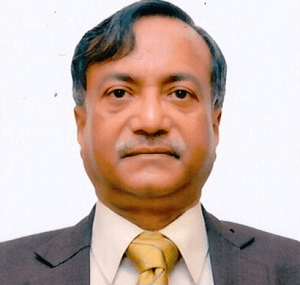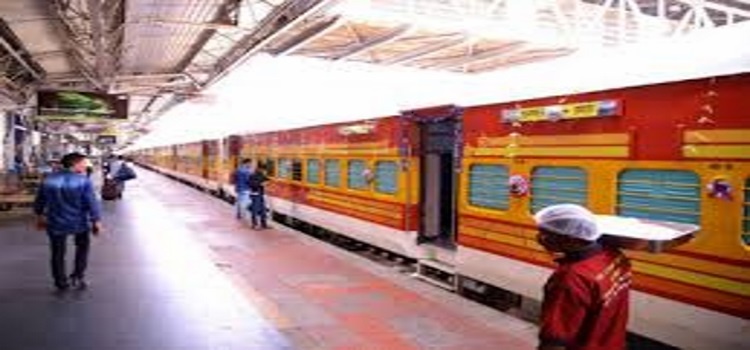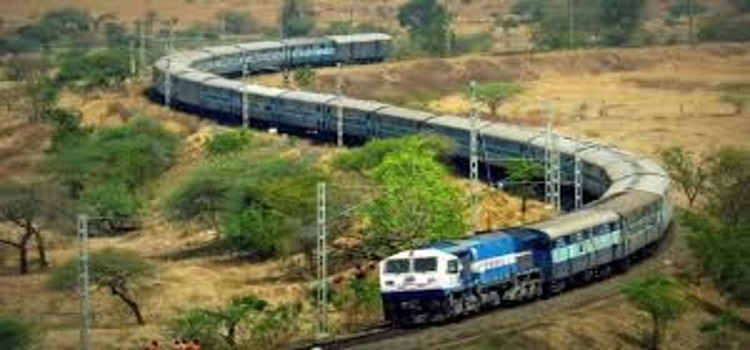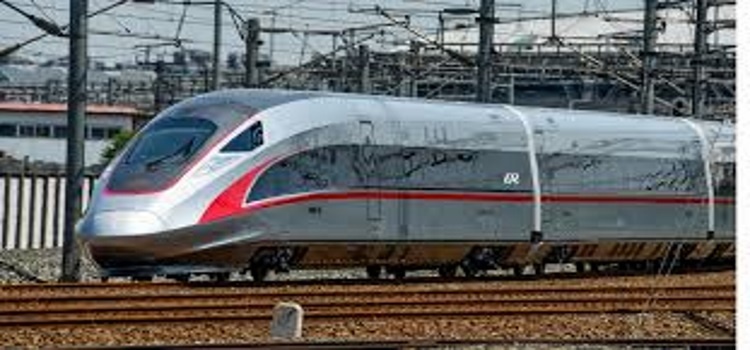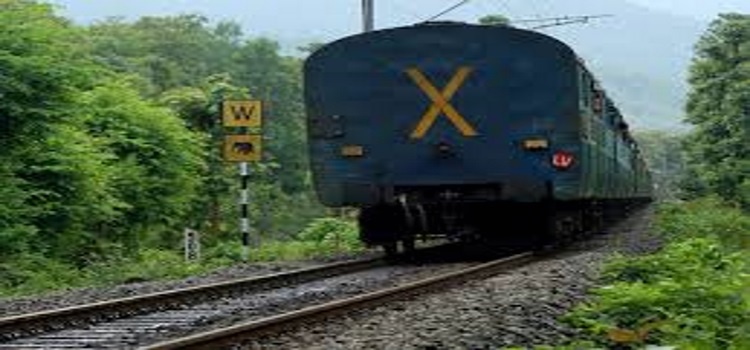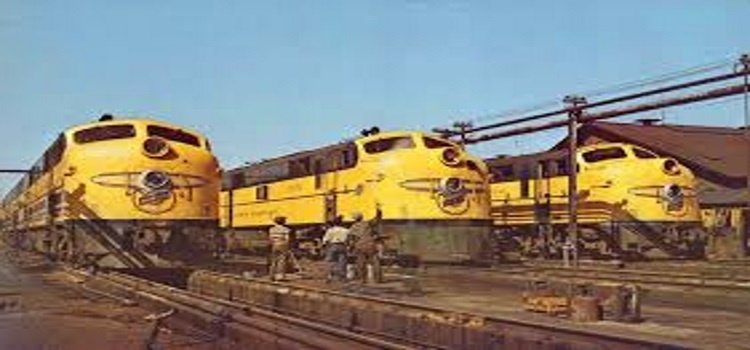
The members of Institute of Indian Railway Electrical Engineers (IREE), South Central Railway Chapter celebrated 7th Railway Electrical Engineers Day Celebrations at Electric Loco Shed, Lallaguda, South Central Railway today i.e., 3rdFebruary,2018. Shri Vinod Kumar Yadav, General Manager, SCR was the chief guest and Shri John Thomas, Additional General Manager was the guest of honour. Shri A.A.Phadke, Principal Chief Electrical Engineer and Chairperson of IREE presided over the function.
The Electrical Engineers Day is celebrated as a mark of its remembrance for the 1st ever electric train was run on 3rd Feb, 1925 from Boribander (Now known as Mumbai CST) to Kurla on 1500v DC on Great India Peninsula Railway.
Speaking on the Occasion, Shri Vinod Kumar Yadav stated that Electrical Engineering has got bright future ahead in the Railways as the emphasis is laid in the recent Budget for Railway Electrification all over the Railway network. The General Manager stated that the Hon’ble Minister for Railways and the Chairman, Railway Board are taking positive view for the introduction of semi Hi-Speed trains and Hi- Speed Trains Network. He also appealed to the Officials of Electrical department to rise to the requirements of large scale railway electrification projects and ensure timely completion from concept to commissioning. SCR is placed at top position over Indian Railways in terms of achieving Energy conservation awards continuously for three years with the efforts made by Electrical Department and should maintain the same in forth coming years, he added. The General Manager also visited the Electric Loco Shed, interacted with the staff and planted a sapling in the premises.
Earlier, Shri John Thomas, Additional General Manager spoke on the occasion and said that Electric Engineers have to face the challenges ahead to achieve the targets of electrification projects completion.
Shri Gopinath Mallya, Chief Electrical Loco Engineer welcomed the dignitaries and made a presentation on the theme of Electric Traction and Technological advancements over the years. Shri A.A.Phadke, Principal Chief Electric Engineer Smt. Padmini Radhakrishnan, Principal Financial Advisor (PFA); Shri Arjun Mundiya, Principal Chief Mechanical Engineer; Shri P.K.Sangewar, Principal Chief Material Manager; Shri Sanjay Sankrityayan, Chief Security Commissioner; Shri Amit Varadan, Divisional Railway Manager, Secunderabad were amongst the Officials present. The delegates from RVNL, L&T Electrical and Automation, Seimens India Pvt. Ltd also participated in the seminar.
About Electrical Loco Shed, Lallaguda
Electric Loco shed Lallaguda was constructed as a part of Vijayawada – Balharshah Railway Electrification project at a cost of Rs. 25 crore including the Machinery & Plant with a designed homing capacity of 100 Locos. The shed was inaugurated on 06.09.1995.The shed has started with initial holding of 72 Locomotives comprising of WAM4 & WAG5 for hauling Passenger and Goods Trains. Subsequently higher Horse Power Express locos of WAP4 class were inducted at the end of year 1995. The state of Art technology Three phase locos are inducted in May 2007.
At present the shed has a total holding of 211 Locomotives including 101 coaching locos. The shed is operating 93 express loco link including prestigious trains like Rajdhani, Duranto, Sampark kranthi express trains.
ELS/LGD carries out Minor maintenance schedule (IA/IB/IC/IT) and Major Maintenance Schedules (AOH/MOH/IOH) as well as unscheduled repairs of locos. POH of Locos is carried out at Bhusawal, Perambur, Kancharapara & Dahood Loco workshops.
The shed is able to carry out maintenance of the locomotives with best practices on Indian Railways with highest reliability of the locomotives with meagre 2.77 manpower per loco (against 3.38 IR Average)
Loco Holding:
The present holding is as shown below
Holding of ELS/LGD
| Coaching |
Goods |
Total |
| WAP4 |
WAP7 |
WAG9 |
|
| 40 (Conventional) |
61 (3 Phase) |
110 (3 Phase) |
211 |
| Make |
2008-09 |
2009-10 |
2010-11 |
2011-12 |
2012-13 |
2013-14 |
2014-15 |
2015-16 |
2016-17 |
2017-18 (As on 30.08.17) |
| WAP4 |
63 |
60 |
59 |
60 |
60 |
60 |
58 |
47 |
40 |
40 |
| WAP7 |
2 |
8 |
17 |
24 |
33 |
40 |
40 |
47 |
54 |
55 |
| WAG7 |
8 |
16 |
8 |
– |
– |
– |
– |
– |
– |
|
| WAG9 |
52 |
62 |
71 |
74 |
77 |
81 |
95 |
110 |
118 |
120 |
| TOTAL |
125 |
146 |
155 |
158 |
170 |
181 |
193 |
204 |
212 |
215 |
ELS/LGD carries out Minor maintenance schedule (IA/IB/IC/IT) and Major Maintenance Schedules (AOH/MOH/IOH) as well as unscheduled repairs of locos. POH of Locos is carried out at Bhusawal, Perambur, Kancharapara & Dahood Loco workshops.
The shed is able to carry out maintenance of the locomotives with best practices on Indian Railways with highest reliability of the locomotives with meagre 2.77 manpower per loco (against 3.38 IR Average).
The loco shed is at present headed by the rank of JAG grade Senior Divisional Electrical Engineer assisted by one Divisional Engineer, one Assistant Divisional Engineer along with Senior Material Manager who is responsible for managing the procurement, stocking and distributing of stores to various sections.
The loco maintenance wing is divided into main sections headed by a Senior Section Engineer and assisted by junior supervisory staff to monitor and improve various maintenance schedules and modification works carried out in the section. A locomotive nominated for maintenance is first received by the PPO section and dispatched out through the same section after completion of the maintenance.
The role played by the other sections namely, Traction Motor, Bogie, Auxiliary Machines, Electronics, SPM and Relay, TFP & GR, Pneumatic, Technical, Tool Room, Machine Shop, General and Store section is vital in completing the process. In a nutshell, it is a comprehensive team effort that keeps the wheels on the move.
Non-Gazetted:
| Staff |
Sanction |
Actual |
| Supervisors |
63 |
63 |
| Artisans |
523 |
421 |
| Group D |
88 |
118 |
| Ministerial |
16 |
12 |
| Total |
690 |
614 |
| Man power/loco |
|
2.77 |
| IR average |
|
3.38 |
IMPORTANT MILESTONES:
WAP4 Loco No: 22313 of Electric loco shed Lallaguda adjudged 3rd best out of more than 20 locos in All India basis competition of Crew Friendly Cab Modification contest organized by Ministry of Railways in April’03.
Innovation proposed by ELS/LGD on modification of End Hanger Assembly of brake rigging of WAP4 locomotive was chosen as second best innovation in Indian Railways by Railway Board for the year 2006-2007 and sanctioned a cash prize of Rs. 2,00,000/-.
GM special group award of Rs. 25000/- was declared to ELS/LGD for its excellent performance during 2010-11 among Zonal level.
Electric Loco shed, Lallaguda received “Best Electric Loco Shed Shield” for the years 2010 & 2012 among the three sheds in SC Railway.
Performance Indices:
Outage: The coaching and goods outage for the last 05 years with current year are given below:
|
2013-14 |
2014-15 |
2015-16 |
2016-17 |
2017-18(Apr-Aug) |
| Chg |
Goods |
Chg |
Goods |
Chg |
Goods |
Chg |
Goods |
Chg |
Goods |
| Railway Board Target |
88.33 |
65.20 |
87.42 |
76.89 |
85.95 |
99.51 |
87 |
107.15 |
85.4 |
110.9 |
| Actual |
88.79 |
73.03 |
85.2 |
82.06 |
82.59 |
98.39 |
82.53 |
103.86 |
83.36 |
104.23 |
Statistical Ineffective: The Statistic ineffective details for the last 02 years with current year are given below:
|
2013-14 |
2014-15 |
2015-16 |
2016-17 |
2017-18(Apr-Aug) |
| Target |
6.0 |
7.25 |
6.0 |
9.52 |
7.6 |
| Actual |
7.42 |
8.85 |
7.87 |
7.96 |
8.82 |
Reliability:
PUNCTUALITY RELIABILITY (Per 100 locos/month)
| 2013-14 |
2014-15 |
2015-16 |
2016-17 |
2017-18(Apr-Aug) |
| 3.1 |
3.3 |
3.3 |
2.5 |
2.5 |
ASSET RELIABILITY (Per 100 locos/month)
| 2013-14 |
2014-15 |
2015-16 |
2016-17 |
2017-18(Apr-JUL) |
| 3.1 |
3.8 |
4.2 |
3.2 |
3.4 |
ENERGY REGENERATION IN 3PHASE LOCOS (in Million Units)
| 2013-14 |
2014-15 |
2015-16 |
2016-17 |
2017-18(Apr-Aug) |
| 62.6 |
69.6 |
82.8 |
98.2 |
30.6 |
INNOVATION/ GOOD WORK DONE
1.To avoid dropping of slack adjuster assembly (bottom) in case of breakage of its Split cotter pin in WAP7 locos, ELS/LGD proposed provision of hexagonal head bolt with plain washer and castle nut in place of slack adjuster pin with split cotter pin. The item was discussed during 37th MSG meeting and accepted by Railway Board. RDSO issued Modification No. MS 441 for this arrangement to all Zonal Railways.
2.The falling of brake hanger was observed which are supported by single headless pin in WAP7 locos. To prevent the falling of brake hanger in case of brake hanger pin coming out, E clamps have been developed and provided by ELS/LGD for brake hangers5,6,19&20 which acts as stopper for the brake hanger lever pin. RDSO issued Standard Maintenance Instruction no. SMI 282 on this arrangement to all Zonal Railways.
3.ELS/LGD proposed to remove anti spin valve and associated double check valve in brake system of three phase locomotives since they are not in service. This was proposed by SCR in 37th MSG meeting and accepted by Railway Board.RDSO issued Modification no. MS 447 to all Zonal Railways.
4.ELS/LGD proposed to carryout insitu Magnetic particle testing on TM motor support of 3 phase locos during schedules to detect the cracks.Accordingly RDSO issued Maintenance instruction No.269 Rev.1’ dt:16-3-16 to all Zonal Railways.
5.ELS/LGD has highlighted the problem of non availability of C clearance of MSU which is leading to MSU failures in 3phase locos. Accordingly RDSO issued modification no.456 Rev’0′ dt:9.1.17 for Modification in drawing of supporting ring to achieve adequate ‘C’ Clearance in MSU assembly of 6FRA-6068 TM in WAG9/WAP7 class of locomotives.
6.ELS/LGD proposed to review MOH schedule periodicity of WAG9 locomotives from 18 months to 24 months.During decisions on recommendations of 61stESC Railway Board accepted the proposal and RDSO vide letter no. RDSO Lr No. EL/3.6.1/1, Dt.19.10.16 had issued Revised MOH (TOH) schedule for WAG9 for 24 months.
REDUCING EXPENDITURE:
INDIGENOUSLY DEVELOPED TRACTION CONVERTER COOLANT PUMP:
Converter coolant pumps which are received in M/s BHEL make IGBT Traction Converter locos are of magnetic coupling type and having high failure rate. The cost of the pump is high (Rs.12,98,903/-approx) and the maintenance time is also high. ELS/LGD has explored indigenous market and developed a converter coolant pump through M/s Flowwell at the cost of Rs.1,10,548/- and achieved effective cost saving of Rs.11,88,355/- percoolant pump( RS.23,76,710/- per loco approx). This was accepted by Railway Board & RDSO in 38thMSG meeting.
Reducing energy consumption:
Three phase locomotives are equipped with regenerative braking. These locomotives have contributed saving of Rs. 15.9 crores during 2009-10, Rs. 20.3 crores in 2010-11 & Rs. 11.3 crores during 2011-12 upto August (Rs. 4.5 /unit) through regeneration of energy.
Goods Outage :
Goods outage has been 101.13 locos per day during this month as against the target of 104.1 locos, i.e., 08.52 % above the RB target. With this, the cumulative Goods outage for the year so far has been 73.03 locos against the target of 65.20 locos. i.e 12.01 % above the Railway board target.
Inspections / Super checks carried out:
| Officer |
Day Time |
Night Time |
| Sr.DEE |
1 |
1 |
| DEE |
1 |
1 |
| ADEE-I |
1 |
1 |
| ADEE-II |
1 |
1 |
Energy Conservation:
During the month, 4.5 Million units of Energy was regenerated by 41 three phase locomotives (Locos visited the shed) which was 13.03% of Energy consumed by them. With this 65.64 Million units were generated in total during 2012-2013 which was 13.67% of Energy consumed.
CORDLESS IMPACT WRENCHES:
10nos. Battery operated cordless impact wrenches procured this month for the usageof staff working on various equipment of the locomotive. These wrenches operate at 1.8 Volts for the sizes from M12 to M20 and deliver torque up to 650 Nm. These electrical portable wrenches arelight in weight and easy to operate. They can be used for tightening/loosening bolts of Axle boxes,Transformers, Gear cases etc.
ANTI SMOKING CAMPAIGN
TOBACCO DAY. Dr. Anjaiah. MD, Dr.Sunil. Chest Physician and Dr.Padma. Family planning In charge from Railway Hospital, Lallaguda have participated in this campaign and given presentation on the health hazards of active and passive smoking. The meeting was attended by the officers, supervisors and staff of ELS/LGD.
SPECIAL DRIVES :
15 days special drive to joint check of pantographs with TRD staff and to check and ensure condition of roof equipments (including pantographs, cleaning of roof insulators and roof bars etc.,) in electric locos from 28-12-2013 to 11-01-2014.So far 5 locos covered under this drive.
Regeneration of Energy:
During this month 5.08 Million units of Energy was regenerated by 51 three phase locos (locos visited the shed), which was 12.61 % of the energy consumed by them.v
